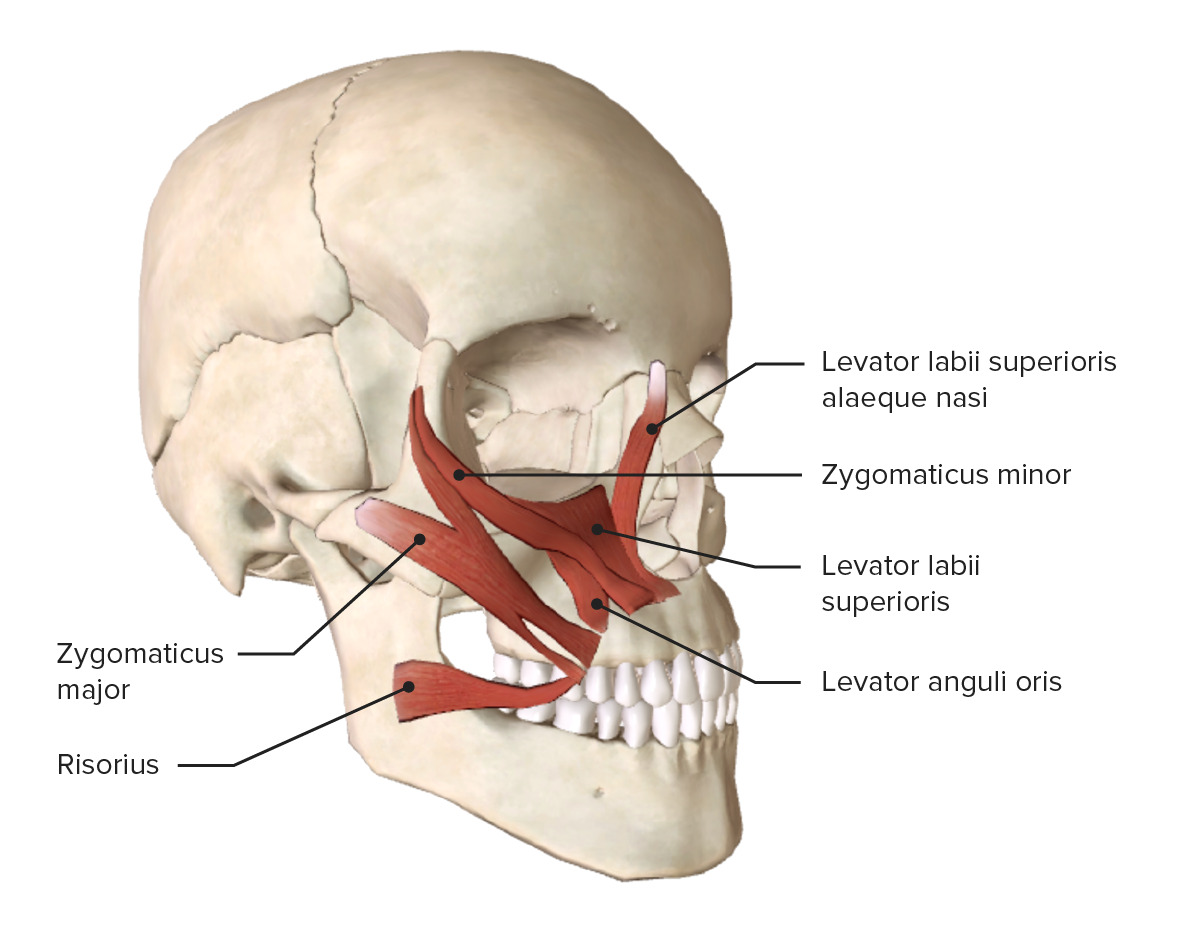Playlist
Show Playlist
Hide Playlist
Circumorbital and Palpebral Group – Facial Muscles
-
Slides Anatomy Muscles of the Face.pdf
-
Download Lecture Overview
00:01 The next muscle here is a sphincter. 00:04 Essentially, it's a sphincter of the eye and this is the orbicularis oculi. 00:10 And here you see the para musculature associated with each eye. 00:15 The orbicularis oculi is going to originate from the medial margin of the orbit. 00:23 And this would be the orbital part of the orbicularis oculi. 00:29 It also then will have an origin for the medial palpebral membrane and this will be the palpebral portion of the orbicularis oculi. 00:39 And then it has an attachment to the thin lacrimal bone as well. 00:47 Insertion of the muscle is the skin and the orbit. 00:52 It also has attachment or insertion points to the tarsal plates that are associated with the upper and lower eyelids. 01:00 So you have superior tarsal plates, as well as inferior tarsal plates. 01:05 Again, innervated by the facial nerve, and specifically the temporal and the zygomatic branches. 01:12 Temporal branches would innervate the superior portion of the orbicularis oculi. 01:18 Whereas, the zygomatic branches are going to innervate the inferior portion of the muscle and because it's a sphincter, it will then close the eyelids. 01:29 And this allows one to wink or squint, particularly, if you're looking into bright sunlight. 01:39 Next, is this very hard to kind of see here but it is highlighted in red. 01:45 This particular muscle that is paired is the corrugator supercilii. 01:51 It's gonna have origin from the medial end of the supercillary arch, which is a bony eminence of the frontal bone. 01:59 And its insertion will be due the skin of the supercillary arch as well of the skin that overlays the supraorbital margin. 02:10 Again, innervated by the facial nerve and specifically it will be the temporal branches of the facial nerve providing that innervation. 02:18 When the muscle contracts it will pull the eyebrow inferiorly, as well as medially, and it'll also produce wrinkling of the skin above the nose. 02:31 These vertical wrinkles that result from contraction of this muscle help to demonstrate a concern or a worry type of appearance.
About the Lecture
The lecture Circumorbital and Palpebral Group – Facial Muscles by Craig Canby, PhD is from the course Head and Neck Anatomy with Dr. Canby.
Included Quiz Questions
With respect to the orbicularis oculi, which of the following statements is most accurate?
- It partially originates from the lacrimal bone.
- It primarily functions to open the eyelid.
- It is innervated by the buccal branch of the facial nerve.
- It overlies the parotid gland.
- It functions to raise the eyebrows.
Customer reviews
5,0 of 5 stars
| 5 Stars |
|
5 |
| 4 Stars |
|
0 |
| 3 Stars |
|
0 |
| 2 Stars |
|
0 |
| 1 Star |
|
0 |




